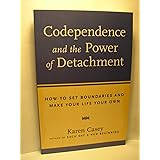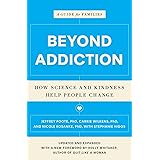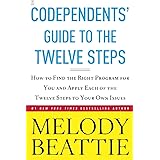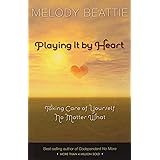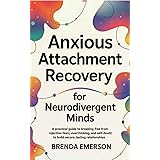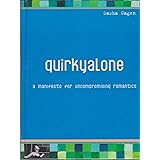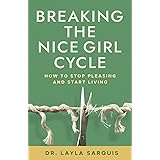Have you ever experienced the thrill of finding the perfect item, feeling that rush of excitement as you make a purchase? For many, shopping is a simple pleasure or a necessary chore, but for some, this experience transforms into a powerful, uncontrollable urge. The video above introduces us to Ronni, a woman whose life was profoundly impacted by the relentless grip of compulsive shopping.
Ronni’s story is a poignant example of how a seemingly innocent activity can escalate into a debilitating addiction, pushing individuals to the brink of financial ruin and personal despair. Her journey into over $100,000 of debt, culminating in bankruptcy and even shoplifting, highlights the serious nature of this often-misunderstood condition. Understanding the signs, causes, and available paths to recovery is crucial for anyone who suspects they or a loved one might be struggling with a similar challenge.
Understanding Compulsive Shopping Addiction: More Than Just “Retail Therapy”
Compulsive shopping, often referred to as shopaholism or oniomania, extends far beyond a simple love for browsing stores or treating oneself occasionally. It is a behavioral addiction characterized by excessive and uncontrollable purchasing, typically driven by intense urges or cravings. This condition significantly impairs an individual’s financial, social, and personal functioning, leading to substantial distress.
A recent report from the Federal Reserve indicated a notable increase in consumer debt, with a 7.5% rise at the end of last year. Much of this accumulating debt is often linked to credit card usage. While not all of this debt is due to compulsive shopping, it highlights a broader societal trend of increasing consumer reliance on credit, which can exacerbate underlying spending issues for vulnerable individuals.
Signs and Symptoms of Compulsive Shopping Behavior
Identifying compulsive shopping can be challenging because societal norms often encourage consumption, blurring the lines between healthy spending and problematic habits. However, there are distinct indicators that differentiate a casual shopper from someone grappling with an addiction. Ronni’s experiences, as shared in the video, resonate with many common signs.
- Uncontrollable Urges: Individuals experience an overwhelming “need” to shop, rather than simply wanting an item. Ronni articulated this powerfully, stating, “It’s a feeling of needing to go.”
- Preoccupation with Shopping: Thoughts about shopping, planning purchases, or anticipating the next trip consume a significant amount of mental energy. This mental engagement often overshadows other important life responsibilities.
- Spending Beyond One’s Means: The individual consistently spends more money than they have, leading to mounting credit card debt, loans, or even bankruptcy. Ronni’s $50,000 in credit card debt and an additional $50,000 borrowed against her home exemplify this devastating consequence.
- Purchasing Unnecessary Items: Many purchases are not genuinely needed or are duplicated excessively, like Ronni’s collection of 15 bottles of soap or identical shirts. The act of buying becomes more important than the utility of the item itself.
- Hiding Purchases and Debt: A significant sign of secrecy often develops, where individuals conceal their shopping bags, credit card statements, or the extent of their debt from family members. Ronni’s admission of hiding purchases from her husband, even forging his signature, demonstrates this pattern.
- Emotional Rollercoaster: Shopping provides a temporary high, an “endorphin-fueled” rush, followed by intense feelings of guilt, shame, and regret. This cycle fuels a desire to shop again to escape the negative emotions.
- Impact on Relationships: The addiction strains personal relationships, particularly with spouses or partners who bear the brunt of the financial and emotional fallout. Bill, Ronni’s husband, expressed reaching a point where he felt like throwing in the towel, illustrating the severe relationship damage.
- Withdrawal Symptoms: When unable to shop, individuals may experience anxiety, irritability, restlessness, or other distress. This mirrors the withdrawal symptoms seen in other behavioral addictions.
The Psychological Roots of Compulsive Spending Habits
Delving deeper into the issue reveals that compulsive shopping is rarely just about the items being bought. Instead, it often serves as a coping mechanism for underlying emotional or psychological issues. Addiction specialist Terry Shulman, mentioned in the video, highlights that there’s typically a core of low self-esteem and insecurity at play.
When individuals feel emotions like anger, sadness, emptiness, or anxiety, they may unconsciously turn to shopping as a way to fill that void. The temporary high from a new purchase provides a fleeting sense of power, control, or excitement, momentarily distracting from deeper emotional pain. This “unfillable void” explains why the satisfaction from shopping is so short-lived, leading to a continuous chase for the next purchase.
Furthermore, early life experiences can significantly shape these patterns. Terry Shulman points out that Ronni’s urge to buy things in sets might stem from her parents’ divorce and a feeling of abandonment. The act of picking one item felt like “taking away from a family,” suggesting a deep-seated need for completeness or control that shopping temporarily fulfills. Such insights underscore the complex interplay of past experiences and current behaviors in compulsive shopping.
Navigating the Path to Recovery from Shopaholism
Recognizing the problem is the crucial first step toward recovery from compulsive shopping. While Ronni’s wake-up call came in a dramatic fashion, through being arrested, many individuals begin their journey to recovery through less extreme realizations. It’s a challenging process, but one that is absolutely achievable with the right support and strategies.
1. Seeking Professional Help and Therapy
Given the deep psychological roots of compulsive shopping, professional guidance is often indispensable. Therapists specializing in addiction, particularly cognitive-behavioral therapy (CBT), can help individuals identify triggers, challenge distorted thoughts about spending, and develop healthier coping mechanisms. Ronni reached out to Terry Shulman, a shopping addiction specialist, indicating the importance of expert intervention.
Therapy can also address underlying issues like low self-esteem, anxiety, depression, or past trauma, which often fuel the addiction. Support groups, similar to those for other addictions, provide a community where individuals can share experiences, receive encouragement, and feel less alone in their struggle. These groups offer a safe space for accountability and understanding.
2. Implementing Strict Financial Controls
Controlling access to money is a practical and immediate step. For Ronni, this meant shifting to a single checkbook under her husband’s name, requiring his signature for any checks. While this might feel restrictive, it creates necessary boundaries during the early stages of recovery. Other strategies include:
- Cutting up credit cards and switching to debit only, or strictly cash.
- Setting up automatic bill payments to prevent funds from being diverted to impulse buys.
- Enlisting a trusted partner or financial advisor to manage finances.
- Unsubscribing from marketing emails and avoiding retail websites to reduce temptation.
These controls are not meant to be punitive but rather protective measures, empowering the individual to regain control over their spending habits. They help in creating a buffer between the urge and the action, allowing time for healthier decision-making.
3. Developing Healthy Coping Strategies
Since shopping often fills an emotional void, replacing this habit with constructive alternatives is vital. Individuals need to find new ways to manage stress, boredom, loneliness, or other uncomfortable emotions. This could involve:
- Engaging in hobbies or activities that bring genuine joy and fulfillment.
- Practicing mindfulness or meditation to become more aware of triggers and urges.
- Exercising regularly, which releases natural endorphins and improves mood.
- Connecting with friends and family in meaningful ways to combat isolation.
- Volunteering or engaging in community activities to foster a sense of purpose.
Terry Shulman’s approach of taking Ronni to stores to teach her to “look, but not buy” is an example of exposure therapy, gradually reintroducing situations while developing new response patterns. This helps retrain the brain to separate the act of browsing from the compulsion to purchase.
4. Rebuilding Trust and Relationships
Compulsive shopping often erodes trust within relationships due to secrecy, financial strain, and broken promises. Rebuilding this trust requires consistent effort, transparency, and patience. Open communication with loved ones, involving them in the recovery process, and demonstrating a genuine commitment to change are all crucial steps.
For Bill and Ronni, their journey involves navigating new financial rules and restoring confidence. It is a long process, but Ronni’s desire to “not end up in jail or lose my family” shows her strong motivation to heal. This commitment to family and personal well-being becomes a powerful driving force for sustainable recovery.




